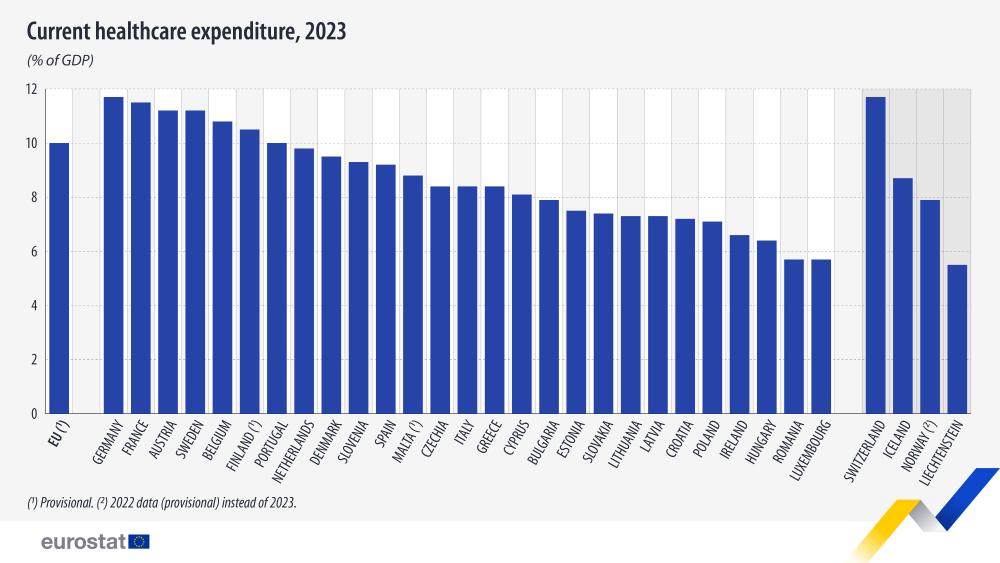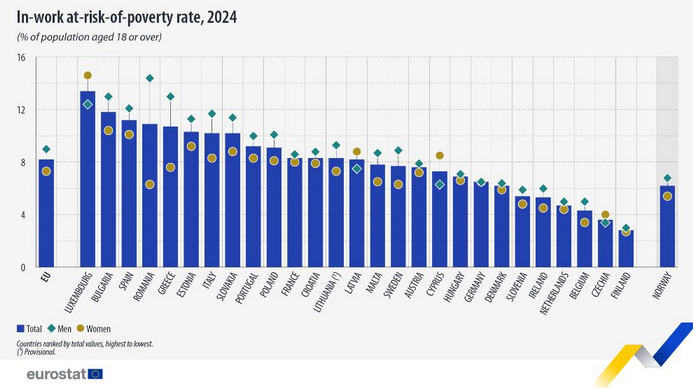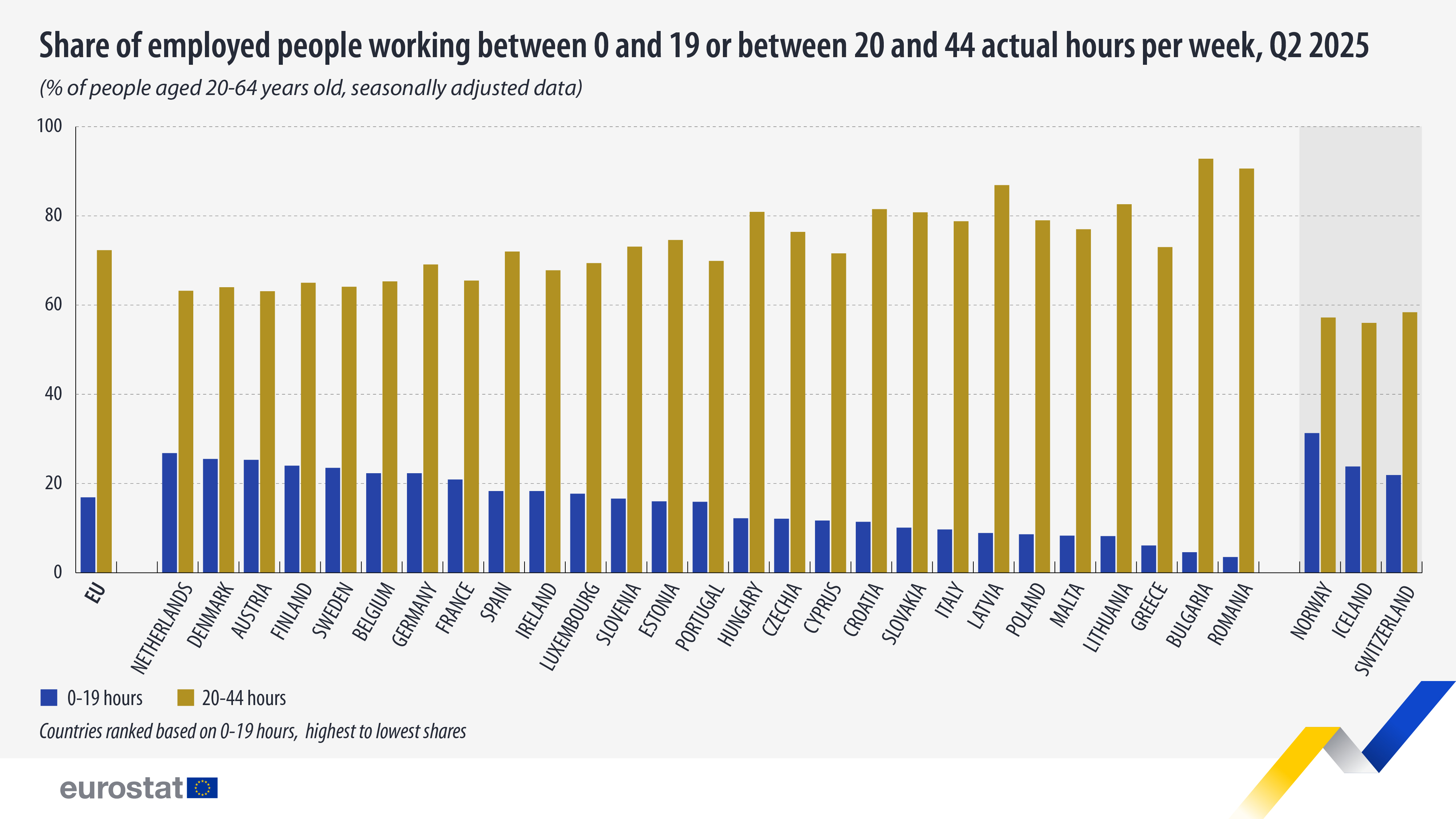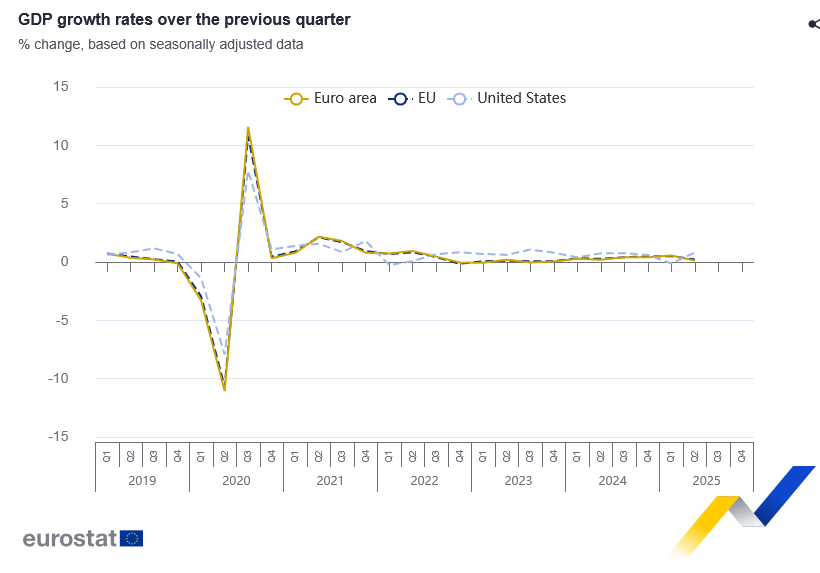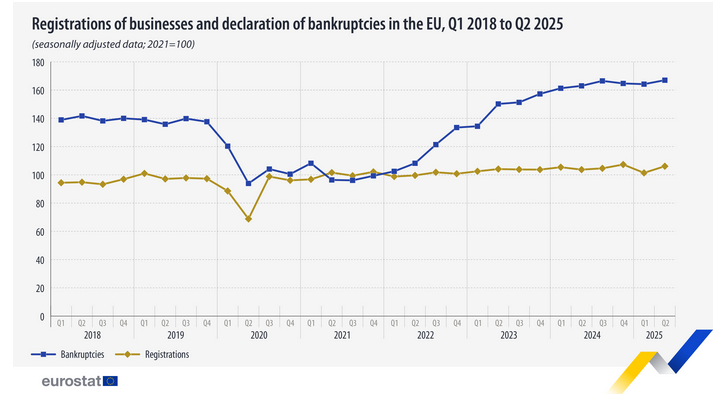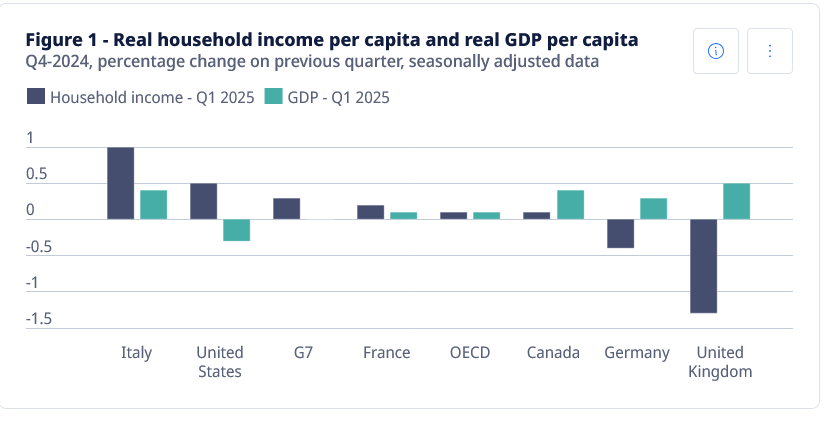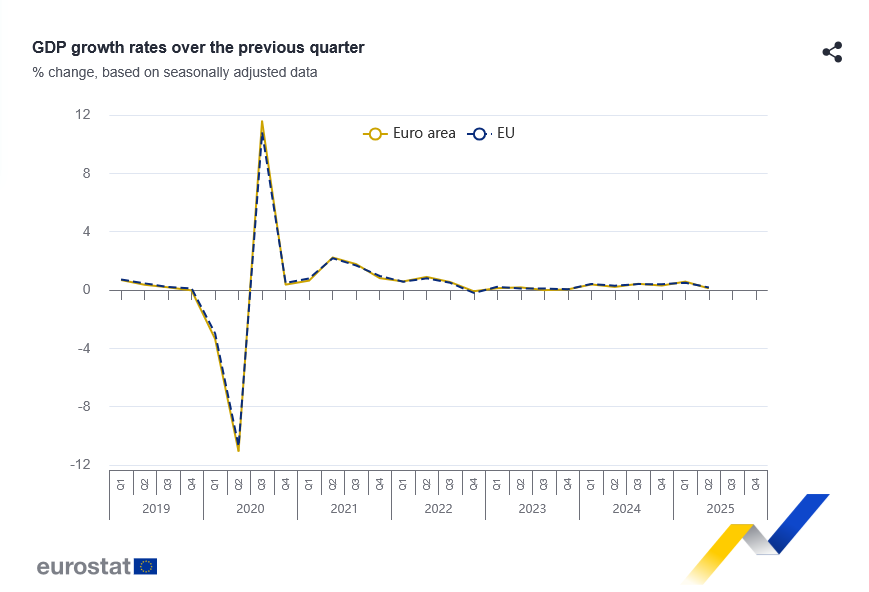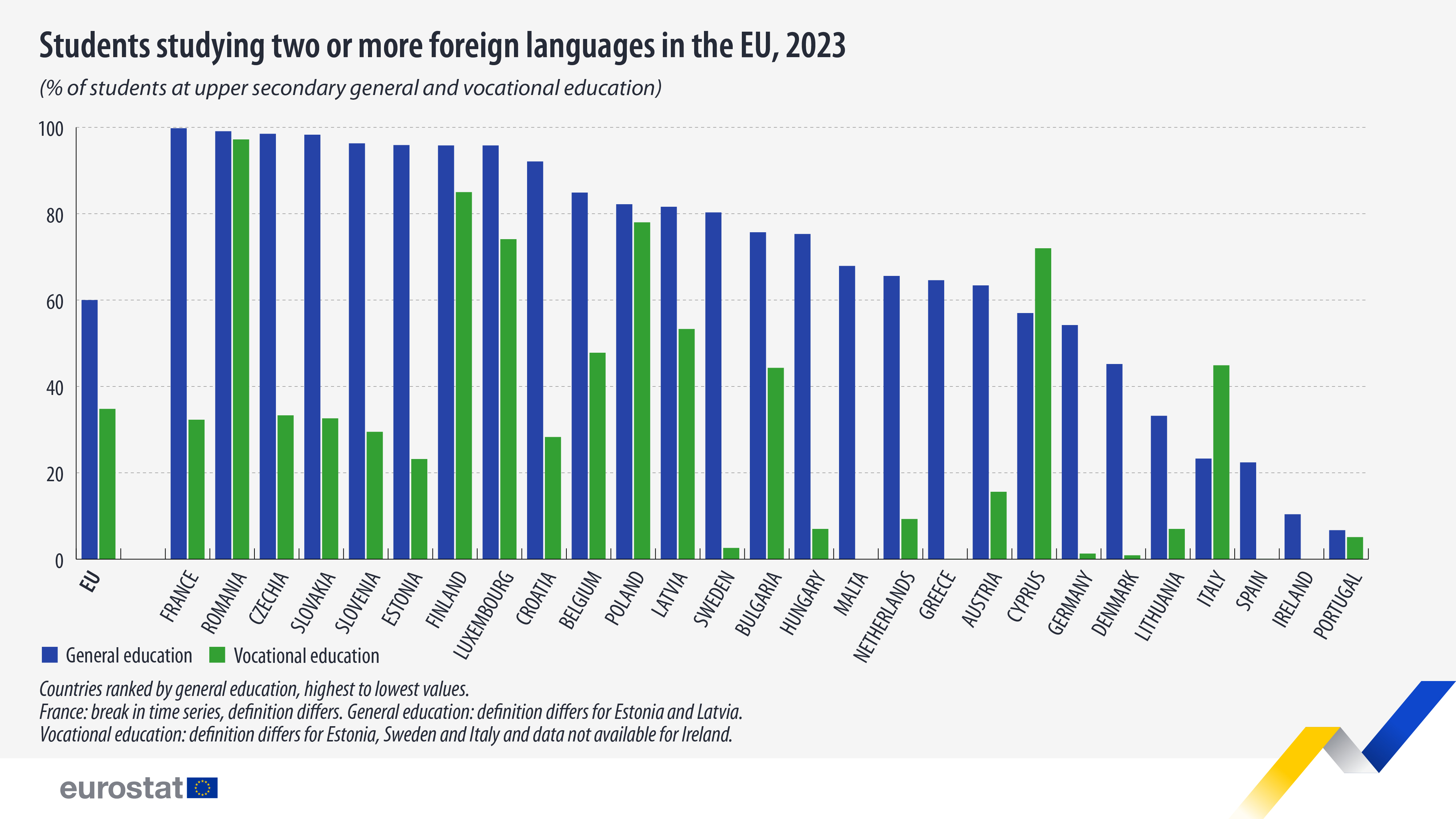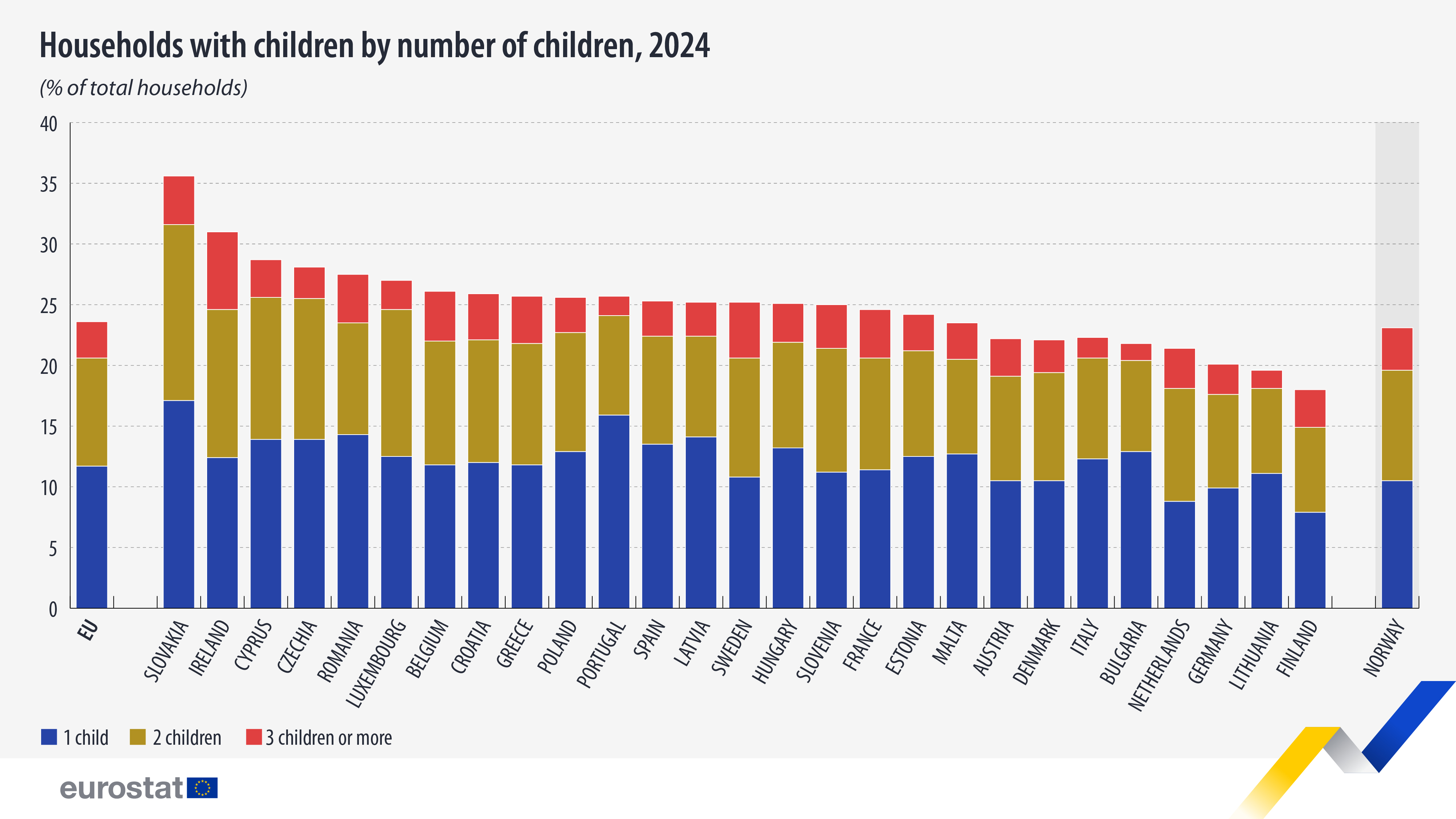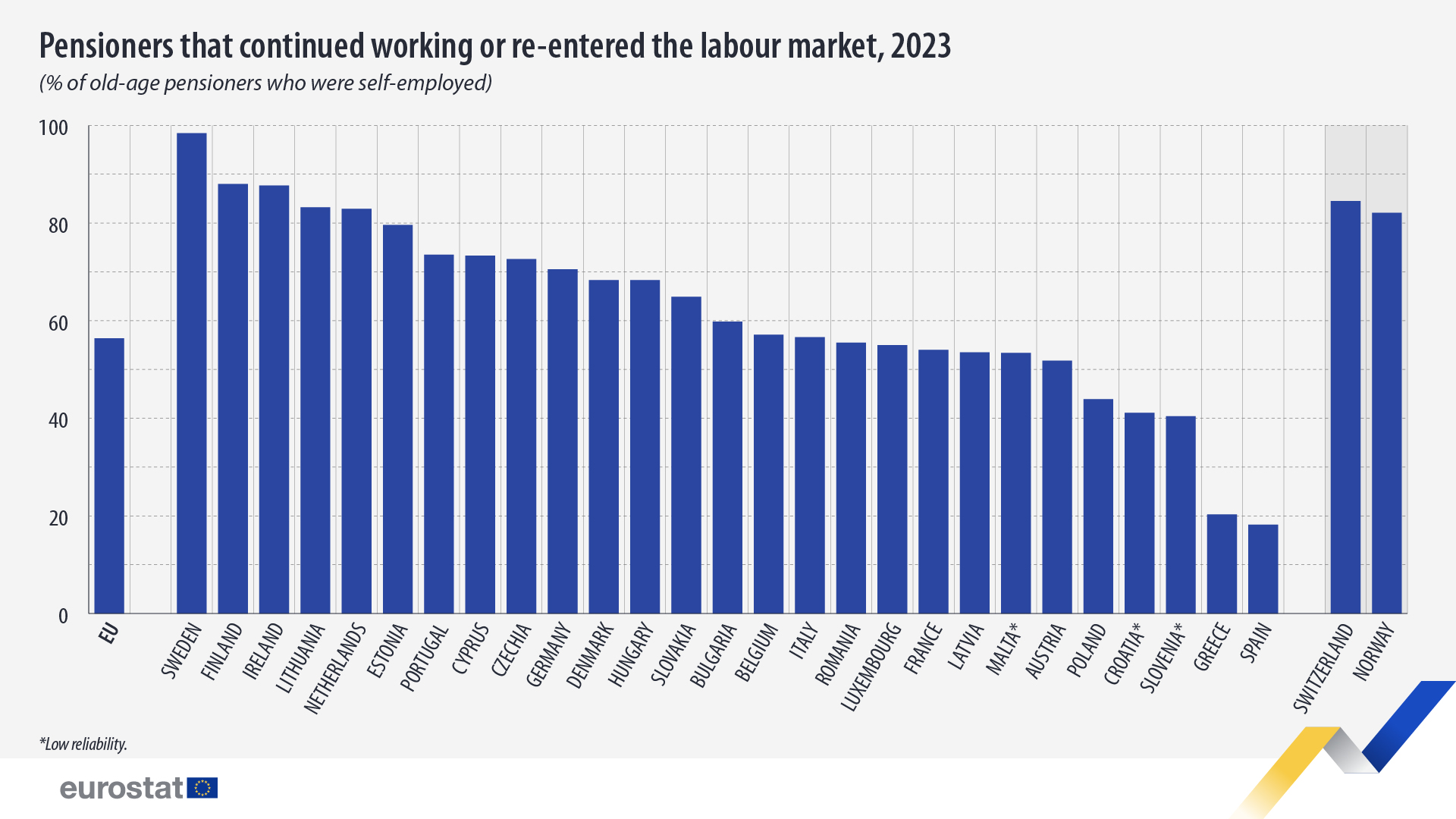In 2023, the EU spent €1 720 billion in healthcare expenditure, equivalent to 10.0% of the EU’s gross domestic product (GDP).
Statistics
Risk of poverty does not only affect people living in households with low work intensity or people without employment.
In the second quarter of 2025, 10.8% of employed people aged 20-64 in the EU worked more than 45 hours per week in their main and second job combined.
In the second quarter of 2025, seasonally adjusted GDP increased by 0.1% in the euro area and by 0.2% in the EU, compared with the previous quarter.
In the second quarter of 2025, the number of registrations of EU businesses increased by 4.6% compared with the first quarter of 2025.
Real household income per capita in the OECD increased by 0.1% in the first quarter of 2025, mirroring the growth in real GDP per capita.
In the second quarter of 2025, seasonally adjusted GDP increased by 0.1% in the euro area and by 0.2% in the EU, compared with the previous quarter, according to a preliminary flash estimate publis
In 2023, 60.0% of students in upper secondary general education across the EU studied 2 or more foreign languages as compulsory subjects or as compulsory curriculum options.
In 2024, almost half (49.8%) of households with children in the EU had 1 child, 37.6% had 2 children, and 12.6% had 3 or more children.
Data from the labour force survey, collected from old-age pensioners in the EU in 2023, show that 56.4% of self-employed worked after having received their first old-age pension.
